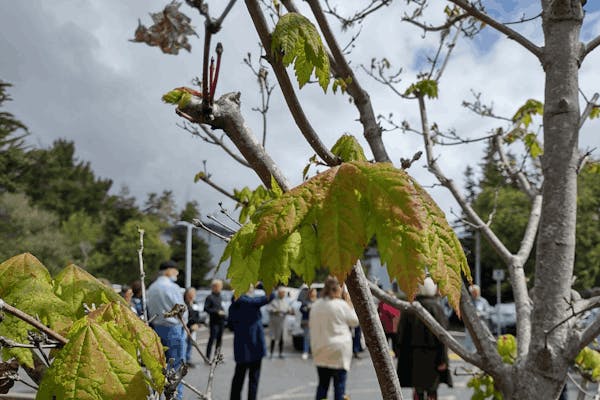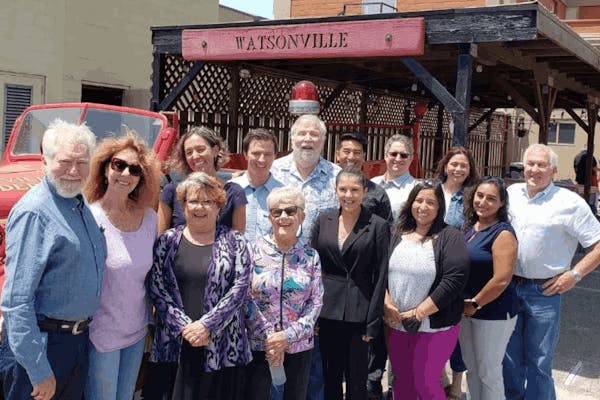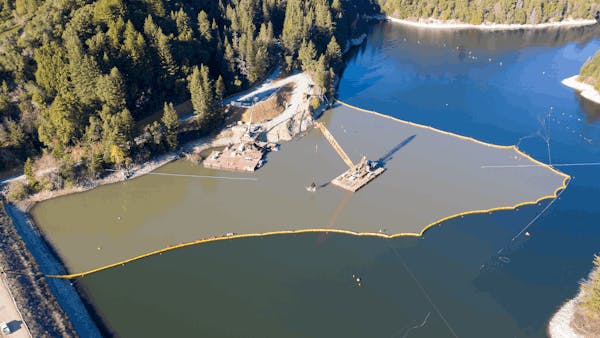
The Community Foundation and our Local Environment
A Central Hub Helping Solve Our Water Issues
In Santa Cruz County, our issues around water run the gamut- from drought to torrential rains, saltwater intrusion into aquifers, infrastructure ill-equipped for rapid climate change, and a complicated route to finding and distributing money for important projects. As the weather warms up and dries out, the Community Foundation team turned to our in-house water experts, Tim Carson and Rob Swartz, from our Regional Water Management Foundation (RWMF) to learn more about their work and how leaders from across Santa Cruz County are collaborating to ensure our local water supply can meet future needs.
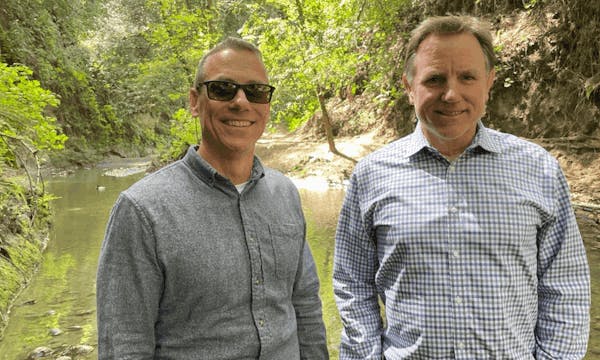
First of all, let’s talk about what “water management” means. It’s more than just turning on the tap and water comes out, right?
Tim: Right! Water management is not just limited to drinking water. It’s how you take all the water that you have access to and adapt it to ensure it meets our collective needs, including human consumption, agriculture, and the environment. When you think about it from a public supply perspective, it's the capture, storage, treatment, and distribution of water and, of course, wastewater disposal. And in recognition that our water supply is limited, water management has sought to make the best use of existing sources and new, alternative sources. Increasingly, we’re seeing the use of recycled water for landscape irrigation and other non-potable uses. In the mid-County area, recycled water will be used to help manage seawater intrusion that threatens our aquifers.
So how does the RWMF help Santa Cruz County manage our water?
Rob: Well, let me add some historical context. In the late 1990s, the state of California decided it was done building its big water projects like reservoirs and wanted to focus on promoting local management. In 2002, the California Senate passed the Integrated Regional Water Management (IRWM) Planning Act. Later that same year, California voters passed Proposition 50, which included $500 million in competitive grants to incentivize local programs for long-term water sustainability. Then in 2006, voters passed Proposition 84, which allocated an additional $1 billion in grants for local IRWM efforts. Together, the Act and subsequent bonds helped create the IRWM approach used by local regions today.
So that’s why RWMF was formed?
Tim: Right. The state launched sizable grant programs to incentivize local agencies to do regional water planning and projects including infrastructure improvements and technical studies across a wide range of issues like water supply, water quality, watershed stewardship, wastewater projects, and stormwater management. That’s when, in 2007, our local water agencies approached the Community Foundation to help coordinate IRWM planning within the County. So, the RWMF was created under the Community Foundation’s umbrella in 2008 to help support our local agencies in developing an IRWM plan and in pursuing grant funding for water-related projects. More recently we’ve supported planning and administration for the Santa Cruz Mid-County Groundwater Agency and the Santa Margarita Groundwater Agency that formed to manage two of the County’s groundwater basins.
Is RWMF unique?
Tim: There are 48 IRWM regions throughout the state, but not many entities that I’m aware of like us. Elsewhere, the IRWM coordination responsibilities generally defaulted to the largest public agency participating in a given region. But RWMF is unique. It took a nonprofit that was already well respected for attracting and distributing resources to meet local needs—the Community Foundation—and adapted it to create the RWMF. That approach has succeeded for 15 years now. And to date, RWMF has been awarded $26 million in grants and supported locals in securing and managing an additional $30 million in grants - that funding enabled important planning and projects to be done, which is really great!

How do we get our water in Santa Cruz County? Are we different than other counties?
Tim: Unlike much of the state which is connected to state or federal water supply projects, Santa Cruz relies upon water from local sources—precipitation and groundwater from our local aquifers. About 90% of residents receive water from a public agency. The rest are either served by a small water system using groundwater, or they’re rural residents on their own groundwater. Over 75% of the county’s water supply is from groundwater. But your source depends on where you reside. Nearly 100,000 residents are served by the city of Santa Cruz Water Department which typically gets 95% of its water from surface water via the San Lorenzo River, North Coast streams, and Loch Lomond reservoir. Residents in Mid-County or in the Scotts Valley area are groundwater dependent, with some recycled water used in Scotts Valley. San Lorenzo Valley is a little unique in that they have both a significant supply from groundwater and surface water. Watsonville relies principally upon groundwater, in wet years may draw from surface water creeks and also produces recycled water. Overall, about half of the water used in the County goes towards agriculture mostly in the Pajaro Valley, which relies primarily on groundwater but also uses more than 5% recycled water.
Is it a good thing or a bad thing that we are disconnected from the state and federal water supply?
Tim: Historically it was probably seen as a liability. But it has forced the region to reckon with its own supply and sustainable management in a way that puts our region ahead of the curve statewide. Much of the state is dependent on the Sierra snowpack, which although is a record amount this year, is projected to dwindle substantially as the climate warms over the next century. I think a lot of the areas of the state haven’t really reckoned with that yet and the ramifications of these changes in the decades ahead.
What are some of the highest priority projects for us in the County?
Tim: The short answer is anything that helps us improve water supply reliability and adapt to climate change. Our infrastructure is not built for what we’ve been experiencing this past winter, and what we’re going to keep experiencing with extreme “whiplash” weather patterns—periods of prolonged drought followed by short bursts of torrential atmospheric rivers. The climate our water system was designed for is not the climate we are going to be operating under in the decades ahead. So, it might be the ability to capture more intense runoff from these bigger storms and the ability to withstand these longer, more severe droughts. There are a lot of necessary improvements to the water systems to adapt them to climate change and RWMF is pursuing funding to help the region adjust to these coming changes.
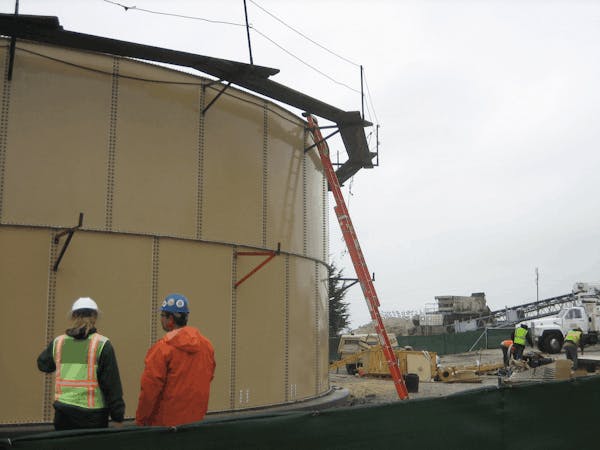
How is the state of water in Santa Cruz County after these historic rains? The Governor has been lifting drought restrictions. But what’s the true picture in our region?
Tim: Loch Lomond reservoir, a key source of supply for a third of the County population, is 100% full for the first time in four years, and streams are flowing. The groundwater response is more complex. Loch Lomond only stores about one year’s worth of supply. And although this is a wet year, if we turned around and had a series of dry years in the next few years, a drought beyond four to five years long, which is entirely possible, we really are not prepared. While we’re out of the current drought, we remain highly vulnerable to prolonged, multi-year droughts. Most of the water used in our region is groundwater – it generally operates on a longer time frame and the response to a wet year depends upon the geology and hydrogeologic conditions – very generally, aquifers drawn down by groundwater pumping over long periods (years, decades) also take many years to recover. Many public supply groundwater wells draw from deeper aquifers. Broadly generalizing, those groundwater levels are influenced more by groundwater extraction and less so by annual recharge even in a very wet year.
Projects are underway in the region to boost aquifer recharge, evaluate aquifer storage and recovery, combat seawater intrusion into coastal aquifers and consider approaches to optimize the use of surface water and/or groundwater in wet versus dry years (an approach termed “conjunctive use”).
Rob: I guess I would say you’re never really out of a drought, right? Every year we have to manage our water supplies as effectively as we can. So even though we’re not in a drought from a hydrologic definition, we still have a lot of challenges. We got too much of a good thing this year. These storms damaged a lot of our infrastructure and the ferocity of these storms created challenges for treating water because there’s a lot of suspended sediment in it.
What are you most proud of about RWMF’s work in the past year?
Tim: We’re grateful to work effectively with public agency partners and bring grant funds in for much needed projects. This past year we supported the Mid-County Groundwater Agency in attaining a $7.6 million implementation grant for groundwater sustainability projects. We also worked with the city of Watsonville on a successful $5 million grant to expand their water system storage.
Header image: City of Santa Cruz's Newell Creek Dam

